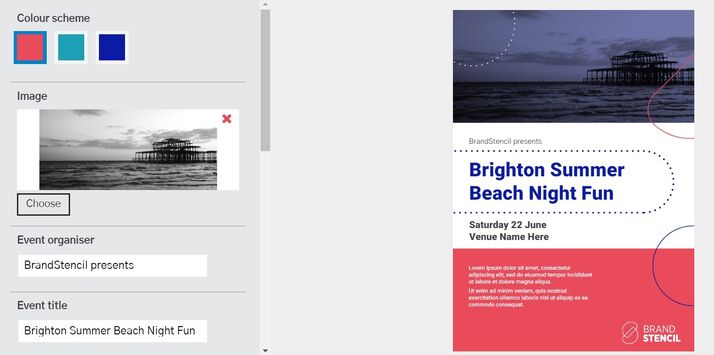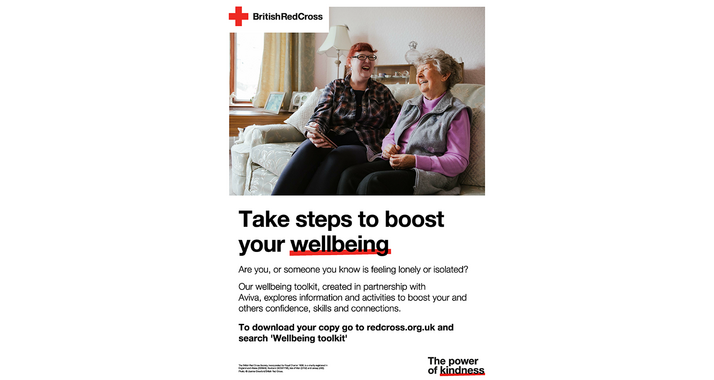Over the last decade job roles have evolved exponentially and at the same time the amount of content creation needed by organisation's has exploded.
How to conduct effective research for a brand management platform
19th November 2021
It’s all about the Brand.
Share this page
As the number of roles that require the production of branded content increases the more potential you have for untrained people to need to carry out design work.
This opens up the possibility of inadvertent brand erosion with incorrect colour codes, fonts, logo placement, image usage etc, despite the best intentions of the creator. If their primary skill is not design then the best bet is to empower them with the tools to excel.
So how do you protect your brand - Enter brand management platforms (BAMs).
Brand management platforms like ours exist to empower teams to produce their own simple on-brand material whilst freeing up design, marketing and brand teams to concentrate on creating the more innovative and bespoke design work.
Once you've decided that this kind of solution will help you then you need to start the research process for what you need.
Brand management solutions
Brand management solutions come in different flavours , so it’s a matter of finding one that’s right for your organisation.
To take an example there are several differences between BrandStencil and Canva;
One of the most important differences between the two solutions is the amount of flexibility in the brand that is allowed. At BrandStencil we create branded, customisable templates which are built from your designs. The user simply fills in a form to create their content and choose their design styles. This provides your users with a template that is on brand every time whilst enabling them to produce their own artwork.
Some form fields can automatically update other areas/components of the template, for example, a user's logo choice can update the contact details, social handles and regulatory statement that appears in the design.
BrandStencil doesn’t use a ‘drag and drop’ interface. This sets the spacing and placement of the elements enabling more brand control and ensures that it’s laid out according to brand guidelines. It prevents users from placing elements wherever they want, too close together or placed within the clear space of the organisation's logo etc.
It protects your brand that you’ve worked so hard to create and enables other teams the autonomy to produce their own communication material without waiting for designers to create or tweak it for them.
Canva on the other hand is a solution that is suitable if your brand or designs allow a fair amount of flexibility. The drag and drop interface is often more suitable for users that have design skills and a good understanding of your organisation's brand.
Therefore when you’re carrying out your research to source one we recommend that you create a wish list spreadsheet of;
- Must haves
- Nice to haves
- Can do without
Click here for an example of what yours may look like.
The linked spreadsheet details most of the elements that you may be looking for. For the purpose of this we’re going to be focusing on brand and brand controls, because, let’s face it, that’s why you’re on this journey.
How to prepare
Choosing a brand management platform and onboarding it into your organisation is no small task. We’ve worked with many different and diverse organisations and there are a few tips that we would recommend even before you get your teeth into research and contacting providers.
Audit your comms material
A good way to do this is to create a list of the departments/teams that are currently catered for in your current comms material before moving on to understand the comms requirements within each. What type of design requests pop up time and time again seems obvious and should be collated, however, some elements may not be immediately evident. Some requests may not be made due to budget or time restraints and require a bit of digging to uncover.
Involving department/team managers to get an understanding of their comms needs and challenges is a simple way to do this and has multiple benefits;
- Gives you a complete overview of the brand challenges that you’re looking to resolve
- Creates a complete picture of what you require from a brand management platform and the investment you’re prepared to make
- You involve key people within departments/teams early in the process and you’ll be helping to create advocates for the internal launch of the platform

Advocates
As mentioned above and in our blog post on ‘How to launch a rebrand internally’ it’s important to involve key people right from the get go. This will help create advocates as they’ll feel involved and valued within the project from the start and contribute to the success of the project. Some of the benefits from this are;
- Shares the amount of research you need to do
- Engages and empowers key members of your audience
- Promotes understand of goals and knowledge of the project
- Maximises the impact of the launch
- There are more people to support other employees embracing the platform
Putting in the ground work will pay dividends and ensure that your platform will suit your organisation's needs.
Brand controls
This is the essential part of a brand management tool so you need to get one that offers the best solution for your brand. Some of the challenges that you may be facing are;
- You’re a federated charity with many local hubs each with their own;
- Logo
- Charity number
- Contact details
- Maybe they each have a different secondary colour
- You’re a global organisation and each country has its own;
- Logo
- Company number
- Contact details
- Language - some languages require a different font
- You have different colour palettes users need to use for internal and external comms
- There is a brand device that is integral to the brand, for example the red highlighter for British Red Cross
- You have a specific header type that is difficult for users to reproduce outside of design software, for example, Teenage Cancer Trust
- There are specific Photographic styles defined in the brand
- You may have branded iconography
Nailing down these requirements will help you narrow down your search. Here’s a short, brand specific, list that you might be looking for.
Requirements
- Manage multiple logos
- Set brand colours
- Set brand typography
- Dynamically update logos based on other inputs, which can also automatically update other details, e.g. addresses and social handles
- Dynamically update colour palettes
- Create designs in multiple languages
- Manage the brand device
- Set typographic styles
- Use branded iconography
- Manage tone of voice in some comms
- Manage type of imagery
Learn more
Key features of our BrandStencil platform that help you manage your branded content.
Product featuresConclusion
There are even more aspects to brand management platforms that we could go on to compare. Every brand management solution is different. The most important take-away is that it’s essential for you to understand what you MUST HAVE and what you CAN DO WITHOUT. Take the time before you embark on your research to involve key stakeholders, find out their needs and the ways that they will benefit from the platform.
It’s also handy to audit your comms material to understand what type of artwork you’d like users to be able to create themselves.
One thing that is sure for any brand management software you choose is that there is an initial time and budget commitment to integrate it into your organisation's ecosystem, so it’s important to take your time when choosing what’s right for your needs.
As well as getting a demo, get a feel of how the company works and the people that you will be working with.
It’s not only important to find the right software for your organisation's needs but also choosing a company that you can build a solid and lasting relationship with.
More on our blog
We've got lots of advice and guidance on our blog. Read next: How to plan for effective internal adoption of a brand management platform.
Read article
